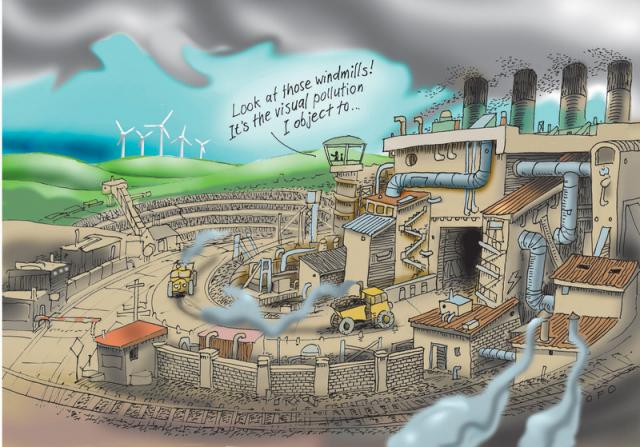Search
Recent comments
- coerced witness....
6 hours 6 min ago - madness.....
6 hours 12 min ago - virginia....
6 hours 23 min ago - zionist stink....
9 hours 36 min ago - artificial truth....
11 hours 24 min ago - no RC yet...
13 hours 5 min ago - more dead.....
14 hours 23 min ago - flavour of the month....
14 hours 28 min ago - in a hurry.....
14 hours 34 min ago - not a clue....
15 hours 40 min ago
Democracy Links
Member's Off-site Blogs
through a looking glass darkly ....

from politicoz ….
Adam Bandt called Martin Ferguson the "minister for the twentieth century" the other night, but the Greens are probably using stronger terms behind closed doors today.
Ferguson, Resources Minister, has announced that the government is shelving plans to pay for the shutdown of some of the country's highest-emitting coal-fired power plants - such as Hazelwood in the Latrobe Valley.
As Adam Morton explains in the Age, this decision represents a terrible hash-up by Ferguson and the government.
When the carbon price was introduced, the government had committed to paying brown coal generators $5.5bn in compensation. This inflated their value just as Ferguson was commencing negotiations on how much it would cost to close them down. Unsurprisingly, the price was high — generators realised they're actually going to do quite well out of current arrangements. And now the government can't afford to meet their demands.
The plants will live on for the foreseeable future because their operators are between $400m and $1bn better off than if there was no carbon price.
Australia’s dirtiest power stations will receive up to $5.5 billion in financial support for the next five years, despite shelving plans to invest in clean energy projects, after the federal government dumped a central plank of its carbon scheme. The government said yesterday that it had called off negotiations with five companies to close down high-emitting power stations.
For nearly half a century, Hazelwood – often described as Australia's dirtiest large coal power plant – has loomed large over Victorian life. It provides about a quarter of the state's electricity, employs hundreds and is responsible for 13 per cent of its emissions. This is now unlikely to change any time soon.
The federal government has shot itself in the foot.
- By John Richardson at 6 Sep 2012 - 5:13pm
- John Richardson's blog
- Login or register to post comments
the true price of electricity...
Taking into account health and environmental damage, wind and solar power from new plants in Europe is actually cheaper than energy from coal and nuclear power plants, according to a new report.
Many people find it difficult to calculate the true cost of their electricity. Special duties, taxes and subsidies all add up to influence prices, not to mention the environmental and health costs that aren't included in the final calculations.
Researchers from Green Budget Germany (GBG) have taken a closer look at these extra costs in a recent study. Their work calculated, among other things, the environmental and health expenses related to available energy sources.
According to GBG's findings, the least expensive energy sources worldwide are currently wind and solar power. One kilowatt hour (kWh) of electricity produced by wind power stations on the coast or in the countryside costs an average of 0.07 euro (about $0.09).
New solar energy plants in central and southern Europe produce electricity for an average of 0.14 euro per kWh. In Germany, the cost is about 0.18 euro when using rooftop solar panels, while in southern European solar parks it costs about 0.10 euro per kWh.
http://www.dw.de/dw/article/0,,16235063,00.html